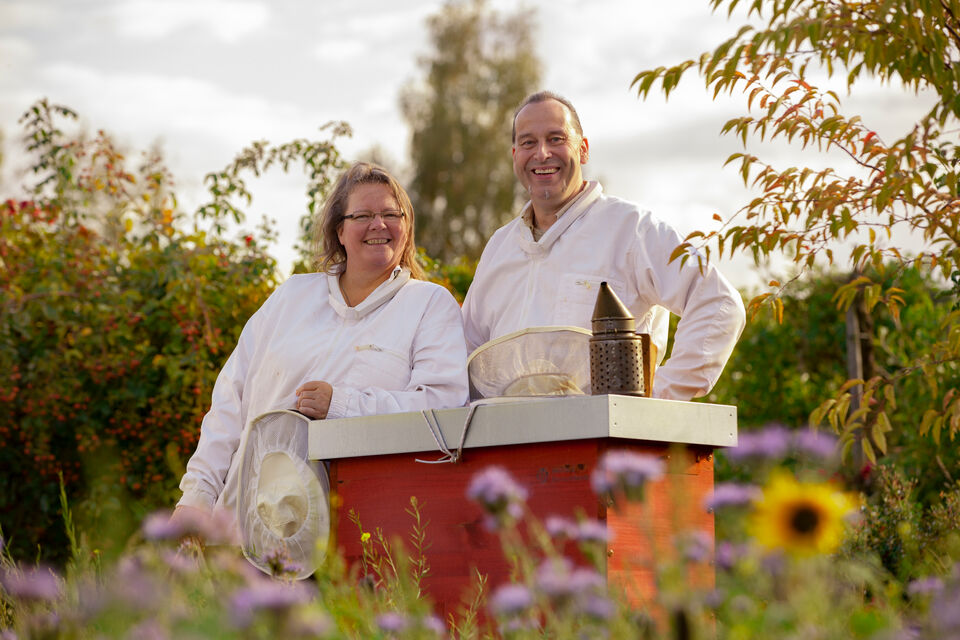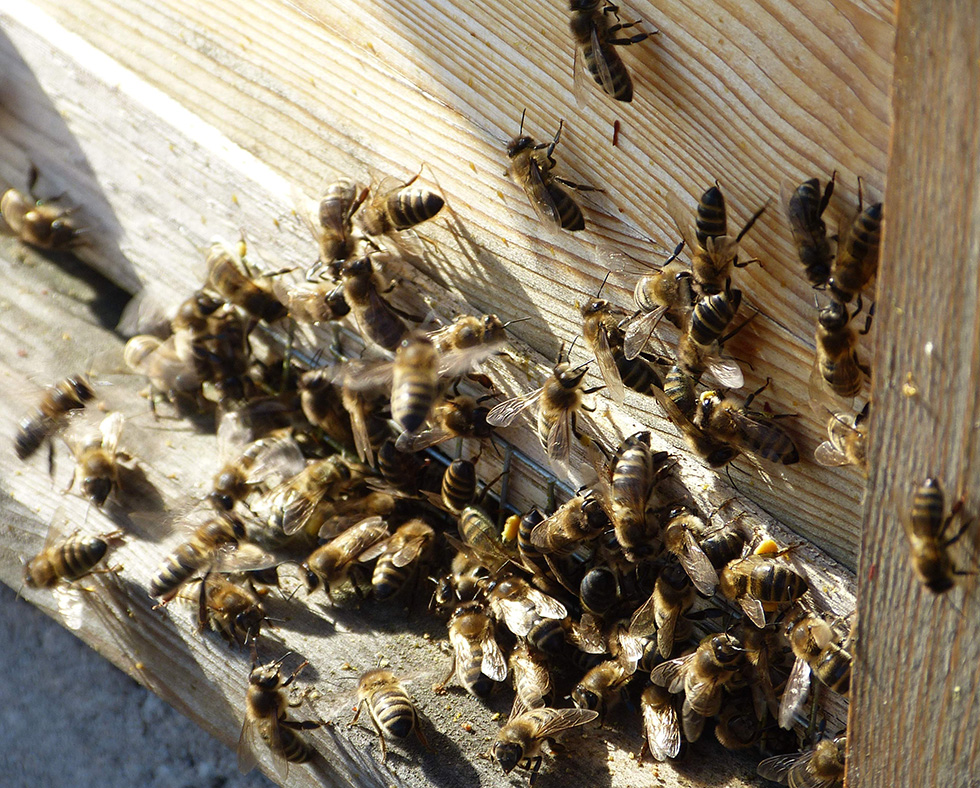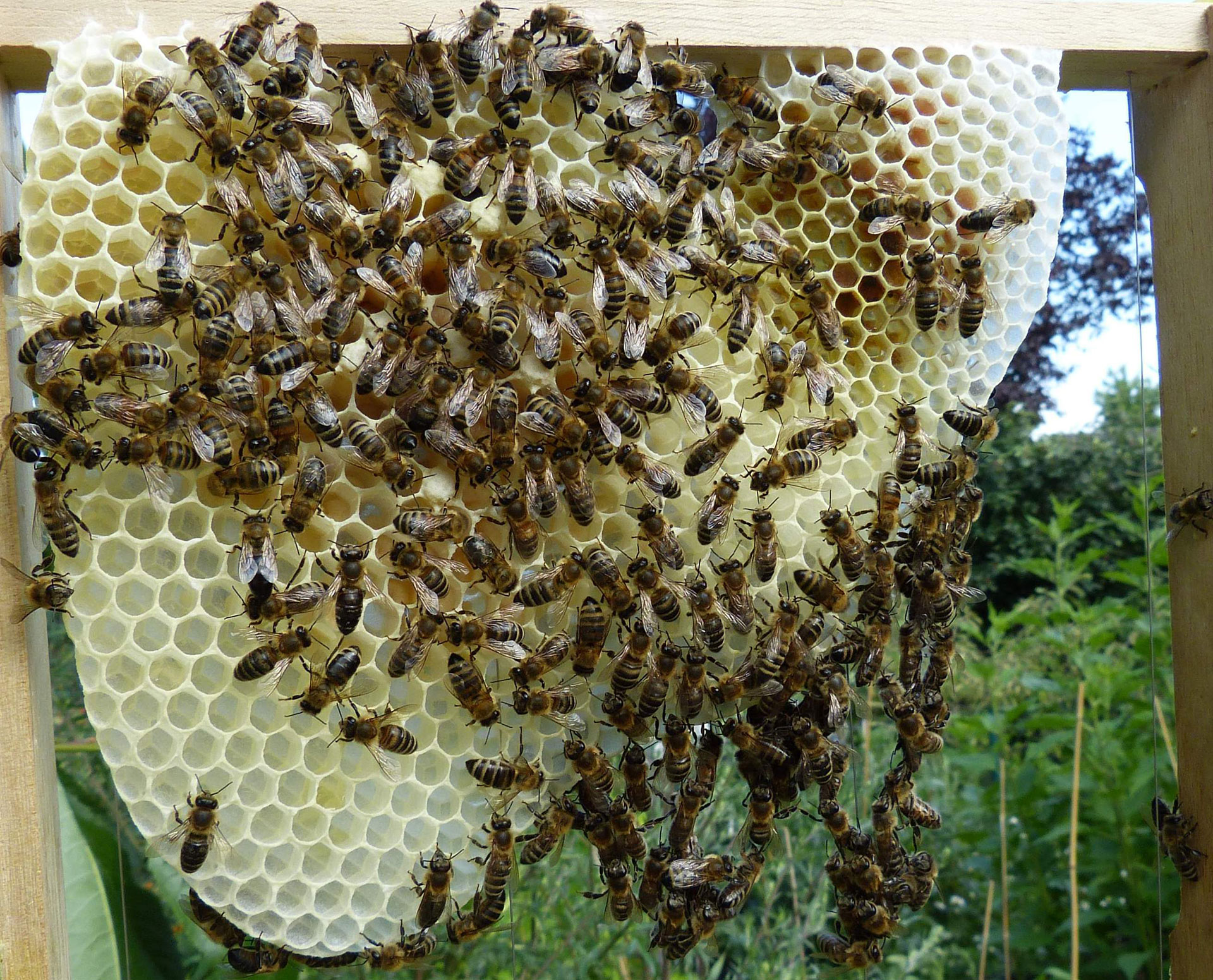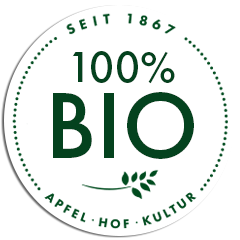Beekeeping Community

Several bee colonies are at home on the Neuhollandshof and are a key pillar in our ecosystem. Hardworking bees are indispensable for us, as they ensure that our flowers are pollinated and that we have many delicious apples in autumn – as the basis for our products all year round.
However, the honeybee is a highly endangered species. The health of bee colonies significantly depends on good beekeeping practices and the way bees are kept.
The Neuhollandshof beekeepers’ association is a grouping of apiculture enthusiasts. First and foremost, Karin and Ingo, our farm beekeepers and thoroughbred “bee parents” take care of the well-being, health and food sources of the farm’s bees.
In addition to the fruit and rose blossoms at Neuhollandshof, the growing of flower meadows and herb fields provides a reliable source of food for our bees as well as a large number of wild bees, bumblebees, wasps, hornets, butterflies and beetles. The sowing of flowers as well as the planting of various perennials and woody plants provides the farm with a welcome form of diversification and thus complements biodynamic fruit growing.


But what is the difference between species-appropriate and conventional beekeeping?
Species-appropriate beekeeping means care, dedication and openness, i.e. also the beekeeper’s inner approach towards the bees. This type of beekeeping is aimed at the natural needs of the bee colony, respecting the bees as a whole and understanding the colony including its honeycombs as a coherent organism. The bee should be valued as a living thing and treated with respect.
Beekeeping is therefore not about maximising honey yield, but about keeping bees in harmony with their needs and in such a way that their living conditions are as close as possible to those in the wild.
Key aspects of species-appropriate beekeeping mean, for example, natural honeycomb building, colony reproduction by swarming and stand-up breeding, i.e. no artificial queen rearing. Obviously, we forego forming young colonies, drone brood cutting, middle walls as well as the wing clipping of the queen bee.
And: our bees build their own honeycombs! For the health of the colony, wax sweating and building combs are important hygiene measures. To build combs, a colony consumes more honey. Our aim when keeping our little bees is not to extract as much honey as possible, but to see the bee (= the colony) as a whole and let it develop its natural abilities.


